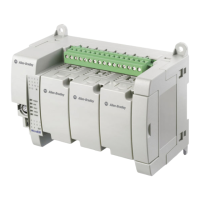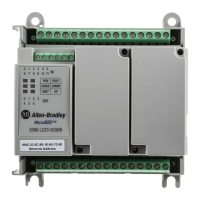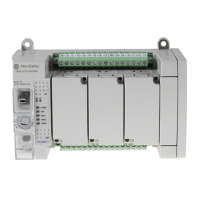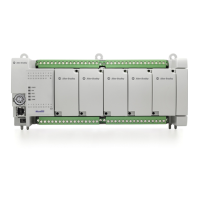Programming Overview
4–11
You
assign logical addresses to instructions from the highest level (element) to the
lowest level (bit). Addressing examples are shown in the table below
.
To specify the
address of a:
Use these parameters:
➀
Word within an integer file
File Type
File Number
File Delimiter
Word Number
7N:2
Word within a structure file
(e.g., a timer file)
File Type
File Number
File Delimiter
Structure Number
Delimiter
Word
T4:7.
ACC
Bit within an integer file
File Type
File Number
File Delimiter
Word Number
Bit Delimiter
Bit Number
7N : 2 / 5
Bit within a bit file
File Type
File Number
Bit Delimiter
Bit Number
B3 /31
Bit files are bit stream continuous files, and therefore you can
address them in two ways: by word and bit, or by bit alone.
Bit within a structure file
(e.g., a control file)
File Type
File Number
File Delimiter
Structure Number
Delimiter
Mnemonic
R6:7 /DN
➀
Some
programming devices support short addressing. This allows you to eliminate the file number and file
delimiter from addresses. (For example: N7:2=N2, T4:12.ACC=T12.ACC, B3:2/12=B2/12
)
Consult
your
programming device’s user manual for information on addressing capabilities.
Programming
efesotomasyon.com - Allen Bradley,Rockwell,plc,servo,drive

